

Volume 9, No. 3, Art. 33 – September 2008
Touching and Gesture Exchange as an Element of Emotional Bond Construction. Application of Visual Sociology in the Research on Interaction between Humans and Animals1)
Krzysztof Tomasz Konecki
Abstract: This article examines the problem of analysing the interaction between humans and domestic animals. The research involved the analysis of transcripts of video recordings representing the interactions between humans and animals. Observations of touch and gesture exchange allowed the reconstruction social rituals (greetings and farewells) as well as other social forms of association (playing, spontaneous expressing of emotions, baths, putting to sleep, walks, fights during walks, indulgent reproach), which create emotional and social bonds. The analysis of visual data provided an opportunity to examine the corporality and direct interactions of bodies in the sequential exchange of gestures. The method applied in the analysis of data was grounded theory.
Key words: human and non-human animals interactions; visual sociology; video recordings; analysis of visual data; intentionality; intersubjectivity; corporality; touch; grounded theory; social association; playing
Table of Contents
1. Introduction
2. The Method
3. Talking to Animals—Baby Talk
4. Intentionality
5. Touching
6. Playing
7. Other Social Associations
7.1 Spontaneous expression of emotions
7.2 Greetings
7.3 Feeding
7.4 Giving medicines
7.5 Walks
7.6 Punishment
7.7 Establishing a form of interaction
7.8 Putting to sleep
8. Conclusion
Appendix 1: Formation of Emotional Bond and Identity by Means of Exchange of Gestures
This paper based on video recordings of human-animal interactions is an extension of our interest in visual aspects interactions, previously examined in the book "People and their Animals …" (KONECKI, 2005a, pp.128-165). This research project, among other materials, used photographs, which served as data for the analysis of various aspects of direct contacts between domestic animals and people. The main scope of the study was the analysis of the way owners represented their relations with the animals as seen in private representations (personal photographs) by means of gestures and choreographic arrangement of the bodies and objects. The research aimed at finding the cultural framework (also cultural idioms of auto-presentations of oneself and domestic animals), which would be useful in categorising oneself through photographic representation. [1]
The formal analysis of non-verbal communication and its background, as represented in the photographs of domestic animals (direct context of interaction), indicates the numerous scenic effects originating from particular definitions of situations based on cultural patterns of the representation of social position. The majority of the photographs represented animals in the anthropomorphic frame (cultural context). The animals take the role of humans, they are represented in the direct context of family (private space of the household, family celebrations, family leisure, company of children). The animals also appear in the private space of their owners, which may affect the particular interpretation of their role in the lives of their owners. After the formal analysis of the photographs it may be concluded that they serve as the evidence for the staged representation of domestic animals through the categories of "particular anthropomorphisation", where "our animal", which belongs to "our family", can be seen as unique, even in our presence, in my private space and, owing to the contacts it has with us, it acts (represents itself) as "human being". The photographs of the animals (similar to those representing people) are somehow evidence of such a definition of the situation (it is the meaning of testifying by means of photographs). [2]
It might be stated, after the analysis of the photographs, that mainly children and women can tenderly hug and touch domestic animals. Men usually keep the animals on the leash or firmly in their hands in order to, practically, create an opportunity to take the photograph, which consequently, from the social perspective, represent men in dominating social position The photographed situations include formal occasions, leisure, celebrations and unusual and often hilarious family circumstances, in which animals participate (KONECKI, 2005a, pp.163-164). [3]
The analysis of the photographs clearly indicates that non-verbal communication and corporality, including aspects of space, play a major role in the relations between humans and domestic animals. The analysis of the photographs adds yet another dimension to the relations, which could not have been observed, previously in the narrative and unstructured interviews carried out during the opening stage of our ethnographic project. Such common and obvious actions as touching, stroking, caressing, kissing the animals were unnoticeable by the owners in their verbal accounts. What is obvious is usually overlooked even though it is, at the same time, exceptionally important in social relations. The "innumerable inscrutable habits" (SILVERMAN, 2007, pp.11-36), often unremarkable incidents, can be of theoretical importance for the sociological analysis and/or the analysis of other social beings (see: SILVERMAN, 2001). While examining the interactions and relations between humans we can simultaneously research into family relations and better understand their nature. The issue of space, non-verbal communication and touching, play major roles in the construction of emotional bonds. The interactions between humans and animals show that the pre-concepts of emotions, and consequently of emotional bonds, revealed on the level of colloquial language, are further strengthened by touching and only then there appears what is called a social bond and "family". [4]
The photographs exposed the importance of touching in the construction of both social and family bonds. Nevertheless the same photographs remained just static and culturally determined images of social bond that "is becoming in everyday life". Thus the reply to the question "how is such a bond structured in the naturally occurring interactions?" was extremely difficult to give. The main purpose of the article is to thoroughly answer the above question. The further aim of the study is the theoretical and more general objective: How is such a social bond possible? The mere visual analysis of the photographic images fails to answer the question. Therefore we decided to base the research on the video recordings of interactions between humans and animals in order to carry out a detailed examination of the construction of touch in genuine interactions. What is the context for the occurrence and how does it happen? What are the gestures performed by the participants of interaction and what is the sequence? Is there any particular sequence of gestures, which constructs the social association/s (forms)? What are the consequences of the exchange of gestures and the occurring social associations? [5]
The technique chosen for the research was aimed at enabling the analysis of the dynamics of interaction, with regard to the natural sequence in context. Though it has to be stated that the contexts are also constructed and change in time together with the activities of the participants of interaction and the activities of researcher. The context then is constructed in two ways: by both the participants of interaction and the researcher himself. The context of playing may transform into the context of fight, when it is decided by the participants of interaction by means of the exchange of gestures. The context of space may alter when the participants move from the yard into the house or flat in the same convention of interaction and then continue playing with regard to new spatial conditions, etc. Therefore it is difficult to see context as the condition of interaction which directly affects (or even determines) the mode of interaction (see STRAUSS & CORBIN, 1990, pp.96-115, who regard contexts in more deterministic manner). Context cannot be given once and forever and/or established, it is constantly constructed (CHARMAZ, 2006, p.131; SILVERMAN, 2001, p.10; SILVERMAN 2005, p.84). [6]
Video recordings as context for research are also constructed by researcher. It is important where the camera is located, what close-ups he makes, what is the angle, is the camera static or hand-held pursuing the object, the researcher decides what is visible on the screen when the recording is played, what the data are and what will be analysed. The accuracy of the transcribed interaction is the continuation of the same motif of the construction of context, because it might be fashioned by the researcher in a more or less detailed manner. [7]
Recordings allow repetition and multiple viewings of the same event recorded with a camera. It enables a detailed analysis of gestures as well as vocalisation occurring between gestures and simultaneously to them. Nevertheless visual material should not be regarded as isomorphic with the events they reflect. The recordings are made and then replayed by means of a particular technology (camera). For instance, in case of David GOODE's (2007) ethnomethodological analysis of video recordings of his playing with the dog, replaying and building of sequences was possible only in 1-second intervals, which eventually determined the choice of details (and sequences) of interaction to be analysed. Furthermore, the camera was set in a particular place and filmed at a certain angle. When the camera is static some of the events may take place outside the frame and are not recorded on the film (it happened during GOODE's playing with his dog; 2007, p.155). Zooming determines further details of the analysis. All those elements influence the construction of data by researcher, and therefore they should be analysed critically. Videographic description ought not to be treated as a faithful reflection of reality. [8]
Similarly, presentation of data is a way of construction, because interpretation of data at the time of representation is determined by the researcher's choices: what to represent and what should be the accuracy of representation? (GOODE, 2007, p.197) Data do not function independently as the record of objective reality. According to GOODE, they have a "documentary" character and are represented as evidence of the existence of the phenomenon described by a researcher. [9]
Video recordings used in our research allowed us to see and hear more than unstructured and narrative interviews, participant observation (notes on observation) or photographs. Repetition of recordings allows the noticing of gestures, their description and naming. Repetition of recordings allows the observation of exchange and that each gesture in a particular interaction leads to another gesture and then the next follows etc. Particular sequences of gestures can thus be observed. What can also be observed are the functions of gestures (touching) in a particular sequence and what the possible meanings are for the participants of any interaction? [10]
Visual sociology using video recordings provides an insight into the details of everyday life and allows the detailed analysis of these particularities, which, although understood pass un-noticed for the participants (see: KNOBLAUCH, SCHNETTLER, RAAB & SOEFFNER, 2006; SILVERMAN, 2001, pp.202-216; 2005, pp.57-60; HEATH, 1997; LIBERMAN, 2004; GOODE, 2007; MITCHELL & THOMPSON, 1991; LAURIER, MAZE & LUNDIN, 2006 who in the last three positions analyse video recordings of interactions between humans and animals). By showing the visual examples of the mutual activities of humans and animals we are trying to find particular, often unnoticed sequences of sub-activities and movements. We replace the examples of events and instances with sequences in order to reconcile some methodological arguments (SILVERMAN, 2007, pp.61-84; see also SILVERMAN, 2001). The arguments criticise qualitative researchers (ethnographers and researchers who base their studies on unstructured interviews) for providing examples proving the existence of certain phenomena, or the evidence of existence of categories, while not showing how the examples of behaviour, statements, gestures appear in a given sequence of activity of individuals in a particular context of occurrence. This is the case, because it is often sequential logics (e.g. question, reply, confirmation) and the mode of behaviour that decide the significance of a given statement. Generally, sequences form the "structure" of the processes, which are under scrutiny and reflect the ongoing stages of these processes. [11]
In our research 60 video clips were recorded by means of a portable camera, where the operator was following the recorded objects. The clips were transcribed and then analysed by means of grounded theory. The recordings were gathered in order to show typical everyday situations of interaction between humans and animals in their households.2) The context of the recording was also described thoroughly and the basic ethnographic information was provided, such as: who, where, when and why, regarding the particular animal or owner. [12]
Transcription mainly involved the description of what the researcher saw on the video (see: SUCHAR, 1997; KONECKI, 2005b).3) While watching, the recording was frequently paused at individual gestures or sequences of gestures in order to follow the movements of each participant of the interaction. The researcher used video recordings as "quasi-participant observation" by means of graphic description which was a much more reliable tool than his and her memory. The clips could be re-viewed and thus descriptions could be corrected and completed. The short videos were transcribed; the images were thus transformed into text, which was further analysed through open and selective coding according to the procedures of methodology of grounded theory (see Table 1). [13]
Methodology of grounded theory generates categories, their qualities and hypotheses/theoretical theses and relations between hypotheses on the basis of the analysis of empirical data (GLASER & STRAUSS, 1967; GLASER, 1978; KONECKI, 2005a; STRAUSS & CORBIN, 1990; see also: CHARMAZ, 2006). [14]
Open coding in the methodology of grounded theory means ascribing labels (see right side of the Table 1) to particular sections of the text (see left side of the Table 1). The labels should usually have a conceptual character, shifting the researcher from direct description. In vivo codes become theoretical codes and will have the character of sensitizing concepts. Some of the labels become categories, which later become saturated with qualities, that is conceptual elements, which have their empirical references (that is references to actual events, situations, interactions, gestures, etc.). [15]
Selective coding has a theoretical character, because the data are coded by means of generated and selected categories, which may be of analytic and research interest. These categories become a direction for further research on the data and creation of categories. Our analyses are focussed on the sets of particular and selected categories. They are the basis for theoretical sampling that is the choice of such situations, events, interactions for examination, which provide an answer to questions arising while analysing data and categories, or relations between them. In our case, the choice of interactions and their video record was indeed a theoretical choice of samples, which was directed toward answering questions that could not have been answered by the analysis of photographs, even though it underlined the importance of touching during interaction. What is the dynamics of interaction between humans and animals? How does the exchange of gestures happen in such interactions? [16]
Another methodological term can be used to justify our choice of video recordings of "naturally" occurring interactions, which is triangulation (KONECKI, 2000, pp.77-99). We carried the methodological triangulation (the choice of various methods in the examination of one problem). This way there appeared a chance to connect multiple samples of empirical data indexing the same social phenomenon/a, that is building the emotional bond in particular social associations produced by the exchange of gestures. Mere verbal statements indicating the existence of an emotional bond between a human and an animal are insufficient information regarding the construction of the bond in real activities and interactions. Verbal statements become real activities when they are observed in sequences of natural behaviour (including gestures), e.g. when one talks to an animal during the interaction (see Section 3). [17]
During selective coding the researcher using the methods of grounded theory employed the constant comparative method, which compares particular empirical cases, observed interactions and gestures, to qualities of categories and categories. All the above is used for saturating categories and building schemas (diagrams, see Diagram 1 in Appendix 1) which integrate categories and hypotheses. At the same time the researcher writes research notes and theoretical notes, in the latter the theoretical language is used to note the observed relations, similarities and differences between cases and their context of occurrence. Theoretical notes later become the basis of the research report, description or theory. [18]
On the basis of selective coding the researcher of interaction between humans and animals writes theoretical notes, saturates categories, connects them and asks follow-up questions in order to perform theoretical sampling. Video recordings were gathered in connection to the questions asked, e.g. regarding the contexts of playing (countryside, city) and gathering of samples of the most important rituals/encounters between humans and domestic animals in the family context—household. It was meant to fill the whole day of an animal's stay at home with all significant events (walking, feeding, playing, putting to sleep etc.). [19]
In the article we are going to present mainly descriptions and photographic images (stills from the videos) of described phenomena. Yet one has to bear in mind that the bases for the analysis were videos and their transcriptions. The videos were recorded and transcribed by 20 students as part of the research project under the same title as the article. The videos can be found in the archives of the researcher. [20]
3. Talking to Animals—Baby Talk
People talk a lot to domestic animals. The talking usually has the form of "baby talk", that is manner of speaking which is often used by parents when addressing very young children.4) [21]
Baby talk is an expression of positive feelings and an indicator of emotional bond, because in our culture it is a paraverbal idiom of the manner of addressing children, usually they are children towards whom we have the feelings of affection. Such a situation occurs also in interactions between humans and animals.
"A cat raises its head and squinting its eyes looks at the woman, who is stroking its tummy, and the cat pulls the tablecloth with its claws and cuddles it. 'What, Julusia, you don't know what's going on? My little sweet darling' "5) (description from video "Julian 4"). [22]
It might be equivalent to sweet talk and actions of amaeru type (DOI, 1982). Such reactions occur in relations where feelings of love, devotion and emotional bonding appear. Japanese psychoanalyst T. DOI explains the phenomenon referring to terminology from Japanese language. The word amae means sweet in Japanese, whereas amaeru means "behave in a sweet manner". It also means being indulgent to indocile behaviour, mainly of children, but also lovers, whose behaviour we tend to forgive, and indocile demeanour is often the way of testing the strength of the bond, and also a way of confirmation of it. Indulgence for such behaviour is very important and provoking of it is a way of maintaining the bond (DOI, 1982). [23]
Cuddling, "sweet talk" (baby talk, amaeru) and indulgence allow for creating an emotional bond with an animal. Indulgence in this case refers to reactions, which in normal situation would be unacceptable, but in the situation of a strong emotional bond they are partly ignored or fully accepted.
"We say with my mum 'Oo!', says mum, 'How nice!' It nudges her front paw again, Panther (a cat) is trying to strike her, 'How nice are those paws of yours!' I say: 'You little crosspatch, you!' " (description of the fragment of the video "Panther on the floor"). [24]
The other cultural idiom indicating treatment of domestic animals like children is cradling them (non-verbal idiom; see: KONECKI, 2005a, pp.143-152). It is especially visible when, while taking animals in one's arms, the baby talk is applied: "What's up, Bisiu? Oh, golly, what is there? Yeah, yeah … he wants to be carried in arms, evidently" (the cameraman's commentary from video "An animal carried in arms like a child" during video recording, see Photo 1 below from that video).
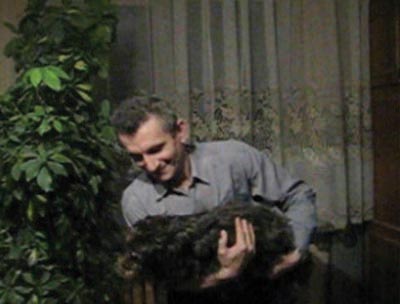
Photo 1: A touch, "An animal carried in arms like a child" [25]
It often happens during everyday interaction that some intentions are ascribed to animals, e.g. the intentions of "feeling of jealousy" during playing:
"And Joker is waiting here all jealous?—she throws a rubber hedgehog. She speaks to the dog: 'Fetch, fetch, you jealous guy'. The dog is lying on the carpet and starts licking its paw, the woman says: 'The cat is gone now, so you've given up' " (from video "Julian 4"). [26]
Here is another example of intentionality being an ascription of intentions and its expression at the same time:
"She is stroking the cat all the time, and the animal is stamping on her feet and strokes against woman's legs. I say: 'Well, it wasn't. He's waiting for somebody'. The woman says: 'Are we going, kitty? My kitty … come on' " (data from author's research). [27]
In that situation the animal "expresses the wish" of going out. [28]
Intentions cannot be understood without the analysis of what is happening on the level of interaction, the ascription of intention is the reverse side of the expression by the partner of interaction. Obviously everything is within the frame of anthropomorphisation of domestic animals on part of humans (KONECKI, 2005a, pp.14-17, see also GOODE, 2007, pp.83-104). [29]
It often happens that the observer/researcher (student participating in the project), while describing interaction recorded with the camera, finds it difficult not to interpret the gestures of the animal. There permanently occurs ascription of intentions (e.g. hope), feelings and reflections (e.g. happiness, satisfaction): "A dog receives a piece of chicken, it licks it lips and is waiting for more". I say: "The happiest dog in the world!" [30]
It would be extremely difficult to understand what is happening in a particular interaction with a domestic animal if we did not apply anthropomorphisation, which seems extremely pragmatic tool for cognition and at the same time (putting the reality in human order in everyday life). [31]
The ability to predict events, in other words thinking, is also ascribed to animals. The animal, according to the owner, has a mind, which allows it to consciously adapt to the surroundings. The mind becomes the basis of the qualification of "intentionality". "The mind" is the structure allowing the placement of animals in a human's world and pragmatically reaching aims similar to those that are reached in the communication between humans. [32]
Intentionality (consciousness of the object/the ability to realise perceived objects and the assumption of the consciousness of the perceived object in another person) in communication with domestic animals is indispensable, because it is the condition of communication itself. The ascription of intentions is a form of taking the role of the other. MITCHELL and THOMPSON (1991) reach a similar conclusion: the participants of games organize their moves in certain projects, which during the game are adapted to each other and the game is stabilized by the application of rules of mutuality between the participants. If the projects are not parallel then the participants of the game invite each other to alter the project by pretending inability to make the move, refusal to play, manipulating pretending of inability to move and simple manipulation. The participants of the game, according to the authors, organize their moves in order to achieve a particular effect (MITCHELL & THOMPSON, 1991, p.200). SANDERS (1999) presents similar views, assuming that taking the role of the other in interaction is a necessary condition to understand the other and collective activity. D. GOODE (2007) does not agree with the above concepts. Basing on his empirical research he states that while playing with animals it is difficult to notice intentions or projects in them. Games are merely adjusting movements and gestures of the players in locally determined conditions. The definition of intention and consciousness is unnecessary in order to understand what is happening between the participants. The sequence of movements is produced in situ and there is no evidence that it is planned or intentional (GOODE, 2007, pp.75-76, see also criticism of SANDERS, 1999, by GOODE, 2007, p.136). Nevertheless, in our opinion, intention refers to movements and gestures in near future, not distant aims in consciously built projects. Intentions, referring to these movements, are read from the preceding movements and there occurs an exchange eventually leading to the construction of a social form such as play. Adjustment of gestures occurs in identical proportions, it is the symmetry of the exchange of gestures that matters in this case. Intentions without a long-term plan create play as an intentional social form. It is additionally the result of the situation that the experiences from the previous plays are remembered and used in the plays that follow. [33]
Without intentionality it would be difficult to address the animal and make contact, give orders, play, etc it would be impossible to recognise its intentions. Ascription of intentions allows for a complete interaction, the achievement of various forms of interaction, regardless of whether the intention really occurs in the form imagined by the human. What really matters is the interactional function of the ascribed intention in the particular context, and it is the enabling of reflexive interaction, in which there occurs the imagined ascription of intention and the prediction of a reaction for the ascription of particular intentions. [34]
Touching seems a necessary element of making closer contact with animals. In the household it is a condition of a mutual acceptance and enables collective actions and communication. Touching is one of the most important ways of establishing and keeping social contacts (see: LEATHERS, 2007, pp.139-160). It is also a tool for announcing intentions. Some physiologists regard touching as the only sense. The remaining senses are the derivatives of touch, as an expression of the stimulation of skin, muscles and blood vessels (SCOTT, 1973, p.12; LEATHERS, 2007). Skin may also act as a sender of information, and because it functions on the subconscious level, it does not undergo alterations connected with the influence of the group or other kinds of outer pressure from the environment. Touching and proximity suggest a craving for closeness and directness, though the physical act of touching may require a closer physical contact than it is acceptable in public places (LEATHERS, 2007). [35]
Space can also announce certain meanings, for instance, we can announce our strong needs of affiliation by means of approaching others. People and animals often stay in transient space, that is, directly surrounding our body, and the distance often has the character of intimate distance (0-45cm). Touching has a significant function in the development of ego and plays an important role in self-assessment. The significance of touch (the semantics of touch) might be classified as four main communicative types:
touching characterised by positive affection (they show support, understanding, inclusion, feelings);
entertaining touching (they show facetious attachment or facetious anger);
controlling touching (they show compliance, focusing attention, announcing the reply);
ritual touching (they show greetings and farewells). [36]
Furthermore, touching has also significance for communication; it can have a supportive function, which is connected to the fact that touching is an effective means of emotional communication. It may also have the function of power and domination, e.g. aggressive touching (pushing, kicking or direct physical assault). It can also show "belonging", that is, e.g. when two people like each other very much (as above). [37]
A similar function can be performed by visual reactions. Visual contact can signify empathy and warmth, and simultaneous looking at each other signals a wish to enter the interaction. The language of eyes is the language of emotion. [38]
All the above statements formed by psychologists refer to interactions between humans. In those descriptions animals (interactions between animals and their individual reactions) are considered when there is a requirement for confirmation of e.g. hypotheses regarding interactions between humans, as in reference to the importance of touching for socialisation and mental welfare (which is also significant in the process of raising chimpanzees). Whereas closeness and intimacy in relations between humans and animals is generally omitted and not considered in psychological analyses, in our analyses of interactions between domestic animals and humans we observed similar meanings and functions of touching. Touching is interpreted in a similar manner by humans, and it also has a similar role in relation to animals. Touching takes place in numerous contexts. Without touching and other non-verbal or paraverbal reactions (including vocalisation, such as purring, whimpering, squealing, etc.) it would be impossible to communicate and stay in the same space with animals. [39]
In a family-household, touching is a necessary condition enabling collective actions and communication between humans and animals (KONECKI, 2005a, pp.143-152, 172-175). There are also numerous contexts, in which touching of animals occurs. The majority of interactions between humans and animals is based on touching. We often observe kissing animals, cuddling, even when they are chained outside the house (see still below from the video "Cuddling on the chain" Photo 1).Talking to animals also occurs, in that particular case, it is repetition of the name:
"… Dino, Dino, Dino … Come Dino. Dino, Dino, kiss me (a kiss). Nice doggy, nice, nice doggy, nice. Dino, Dino, Dino, Dino (higher intonation), come on. Come on (the dog turns its back, but with the head turned towards the girl, it's wagging its tail). What, what, what, Dino, Dino, Dino (repeated at a fast pace). What, what? (cackling of a hen and cameraman's laughter in the background)."
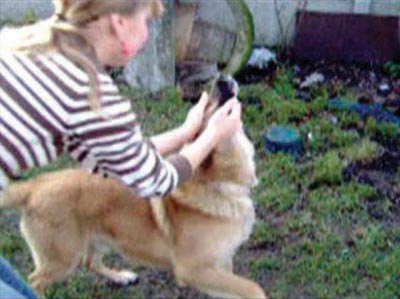
Photo 2: Still from the video "Cuddling on the chain" [40]
In one of the videos we can see a boy in the home context is stroking two dogs simultaneously.

Table 1: Sample of transcription and coding
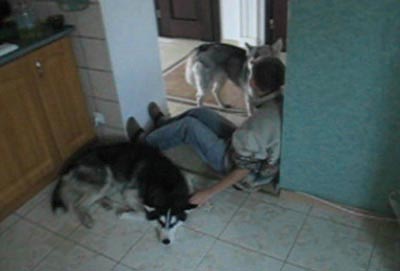
Photo 3: Still from the video: "Touching two dogs—a need of symmetry 1"
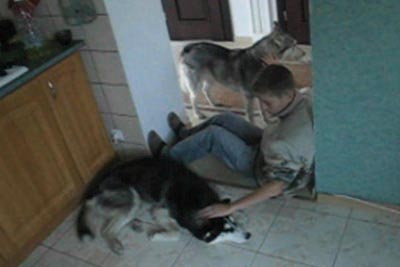
Photo 4: Still from the video: "Touching two dogs—a need of symmetry 2" [41]
Touching and stroking of two animals at the same time shows that there exists a certain interactive need of sharing of cuddling and touching between the two dogs. All of the above is connected to the community of existence of humans and animals in the same space. The emotional order is established by means of touching in an intimate distance and the personal space of bodies directly touching each other. [42]
In the ordinary life within family—household there occur a number of contexts of touching. The contexts of touching refer to: playing, greetings, spontaneous expression of emotions, walks, staged fights during walks, farewells, bathing together, feeding, putting to sleep, waking up, indulgent reproach, giving medicines, deciding on the form of interaction—"negotiations" (whether what we are doing is a greeting or farewell). [43]
Playing seems to be a particularly important form of interaction and of association at the same time, occurring in our relations with animals.6) While observing the behaviour of animals in interactions with humans on the video recordings and calling them "playing" how do we know that what the animals are actually doing is playing? While interpreting human actions, we may provide conclusions based on their responses, face expression, shouts etc. Though how may we be certain that the dogs are playing if they are not announcing it to us verbally using linguistic symbols? It is the symbols (linguistic and non-verbal) used by other persons that matter and may show a particular intention. The intention used by the participant of a game undergoes an "interpretation" or the adaptation of the other participant. A person playing with an animal defined (by him/herself and the observer) as the "participant of the play", announces to us, that the animal is playing as well, because by participating in certain activities it subordinates to the rules of the sequence of reactions, repetitions of the exchanges of gestures and shows signs of cheerfulness characteristic for state of playing (BATESON, 1972/2000, p.179). [44]
Then what is playing? How does one announce the intention to play? Playing is the transformation of the meaning of certain symbols, which may have an alternative direct meaning, but when placed in a particular context and system of symbols they change their meaning. Gregory BATESON describes one of his experiences from a zoo:
"I saw two young monkeys playing i.e. engaged in an interactive sequence of which the unit actions or signals were similar to but not the same as those of combat. It was evident, even to the human observer, that the sequence as a whole was not combat, and evident to the human observer that to the participant monkeys this was not combat" (BATESON, 2000, p.179, see also pp.180, 182). [45]
There is some degree of meta-communication which carry the meaning "this is play". If we, people, know that the game consists of e.g. "pretending" that we are performing a different "sequence of actions" (with a different meaning) than is indicated by the direct sign from a visual and observed "behaviour", then we can apply the rule of "transformation of meaning" to understanding situations of animal reactions. The rule of "transformation of meaning" seems universal. The transformation of meaning of reactions in situation of playing of animals is done by means of non-verbal communication. Animals are able to transform the meaning by "pretending gestures, which, in fact, are not what they may look like" e.g. seizing with teeth, biting to death, piercing the artery, tearing flesh is not real, it is the simulation of a genuine fight (it also includes simulating emotions, e.g. aggression). There are also gestures of cheerfulness, encouragement e.g. skipping, jumping, licking, submissive lying on the back (submission), biting, pushing, escaping, etc. (see Photo 5 and additionally a video clip, showing a similar phenomenon: http://www.youtube.com/watch?v=78H8G2wpYN8&feature=related [August 22, 2008]).
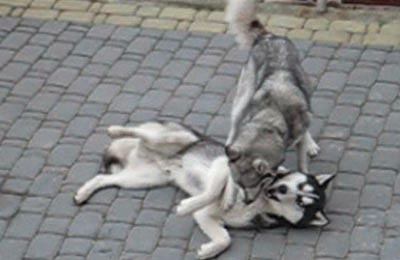
Photo 5: Still from the video "Dogs playing, intentionality—exchange of gestures" (the picture shows "piercing the artery"
like behaviour) [46]
The apprehension of meanings is possible, because all participants of the game use gestures while playing, and it is the body that directly shows, through gestures and touching, that the sequence of gestures is indeed a game. [47]
While playing the "exchange of gestures" is important, which usually happens by means of touching.7) Animals sustain the definition of the situation by either pushing, submitting, allowing biting and then in a second, not allowing biting, turning side towards the other, and then looking at each other or lying on their back. One-sidedness of behaviour and a lack of response and reaction of the other party (ignoring) corrupts the possibility of sustaining the definition. In order to complete the game there has to occur a conversation of gestures in the form of "turn taking", where there might appear "adjacency pairs".8) In the above animal play (see still from the video), when at a certain point one of the dogs ignored the initiative for playing coming from the other dog (taking away the stick), the exchange of gestures did not occur and it was impossible to observe the game in the form of a joint activity. It was not until the other dog replied by biting, frequent turning away from the first dog that it allowed the dog initiating the game to continue playing. The play was in the form of a staged fight, in which we could observe "piercing the artery", "tearing of flesh", pushing with legs initiating the dog play, escaping and chasing, pushing away and shoving with the body. Ignoring ceases the playing on an interactional level, because there is no exchange of gestures, which matched the two parties in "joint activity", in which the cooperation of at least two individuals is essential. [48]
We observed intentionality and exchange of gestures in another video, in which the owner of the dog plays football with him (see also still from the video below).The owner initiates the game:
"'Are we playing, Misiu? C'mon Misiu, kick'. The owner pretends to kick the ball in another direction than she actually does. The dog carefully follows the movements of the partner and quickly runs after the ball, where it was kicked. The dog catches the ball but leaves it when asked by the human partner, then she says: 'Leg up' and kicks the ball again. The dog runs quickly again and catches the ball; the human partner says: 'Quickly, quickly, give me the ball' … When the dog fetches the ball, the owner yet again pretends the gestures of kicking the ball (she says: ssh, ssh, ssh, then laughs), the dog observes them and moves its whole body following the movements of his partner. Then comes the kick, the ball flies and the dog catches it and give it to a partner, who is clapping her hands and shouts: 'bravo, bravooo' and 'come on, once again … Now your missy will throw it up. Careful, jump!' The dog jumps and catches the ball, the owner claps her hands. 'Are we playing?' The simulation of kicking the ball is repeated. Kicking the ball, the dog runs after the ball, catches it and fetches to the owner (at the same time she is clapping her hands and shouting: 'bravo' and laughs). Then again, she says: 'are we playing, Missy will throw the ball up'. She throws the ball and shouts: 'Quick!' The dog catches the ball and fetches it to the owner, she is clapping her hands and saying: 'Bravo, bravoo, bravoo! Come on, are we playing?' (the owner is looking towards the camera). She is clapping her hands and kicks the ball again. The dog catches it and she claps her hands and laughs again" (transcription of the video "Intentionality, playing, country, exchange of gestures, game—ball"). [49]
The above description clearly shows the importance of the repetition of exchange of gestures.9) The single exchange of gestures (pretending to kick the ball—observing the partner and the movements of the body, kicking the ball—catching the ball, request to return the ball—fetching the ball and leaving it) forms the complete association called ball playing. The mutual adjustment of interactional partners through repetitive exchange of gestures develops joint actions, which in this case we will call an association of play. Though from the outside the play might seem uninteresting because of numerous repetitions, for the participants it is attractive and involving. It is confirmed by the reactions of both the owner (laughter, words: "bravo" and clapping) and the dog (engrossment in fetching the ball, general excitement expressed by quick moves). [50]
Return of gestures is important in all possible associations. After kicking the ball there has to occur the return gesture (reaction) of e.g. catching. Playing is a joint action (BLUMER, 1969), in which the intention of mutual (multiple) participation is exceptionally important and has a decisive character as to the occurrence of the phenomenon. A lack of response, ignoring of initiative does not lead to the "completion" of joint action. It can be observed in the video "Ignoring" (see the video description below and Photo 13).
"A dog follows the owner into the kitchen, shakes off in the meantime and enters the kitchen. The woman starts unpacking the shopping bags, she can hear that the dog entered the kitchen and says to her: 'What do we have here, I wonder, for my ladydog. Vanish (washing powder, KTK), I guess'. She has her back turned towards the dog all the time and seems not to pay attention to the dog. The dog stands for a while on her left, shakes off again, sniffs the woman, and not being addressed again, it leaves the kitchen moving towards its couch in the hall" (transcription of the video "Ignoring"). [51]
In the above description of the video one may observe another type of intentional interaction, in which by means of non-verbal announcements and gestures (also verbal, the mocking tone of voice) the woman communicates her intention of ceasing interaction with an animal. Such bundles of non-verbal gestures on a human's part may be called "ignoring with an intention of ceasing of interaction". The woman is occupied with unpacking bags, she does not look at the dog, and she turns her back and does not take notice. The dog is anticipating a change in the attitude of human, it waits, but after a while it shakes off, sniffs the owner and leaves the kitchen and goes towards its couch. The bundle of non-verbal gestures on the side of animal may be called "acceptance of intention of ceasing of interaction". We observe the exchange of set of gestures, which may be called "ignoring with an intention of ceasing of interaction"/"acceptance of intention of ceasing of interaction". Those two sets of gestures are connected with each other and occur simultaneously. However ignoring might also be a tactic of negotiation and wish to commence other social association.
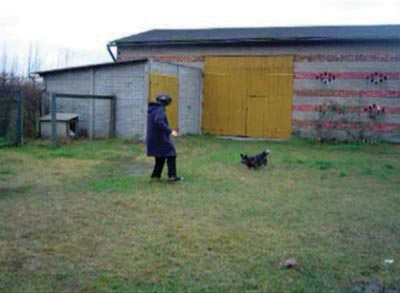
Photo 6: Still from the video: "Intentionality, playing, country, exchange of gestures, game—ball" ("Are we playing, Misiu? C'mon Misiu, kick")
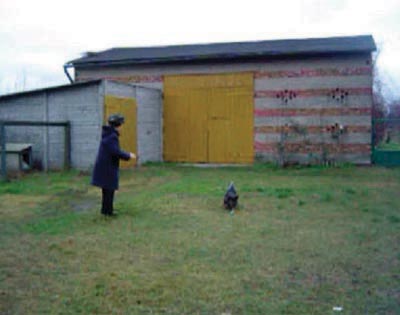
Photo 7: Still from the video: "Intentionality, playing, country, exchange of gestures, game—ball"
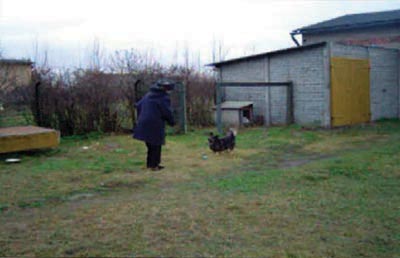
Photo 8: Still from the video: "Intentionality, playing, country, exchange of gestures, game—ball" (fetching the ball)
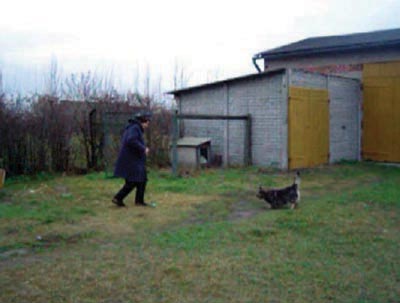
Photo 9: Still from the video: "Intentionality, playing, country, exchange of gestures, game—ball" ("leg up")
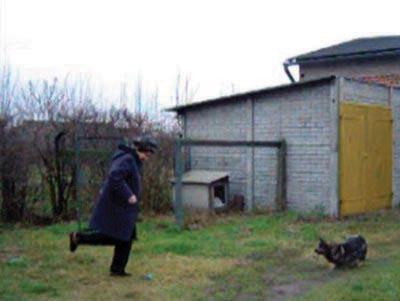
Photo 10: Still from the video: "Intentionality, playing, country, exchange of gestures, game—ball" (ssh, ssh, ssh, then laughs)
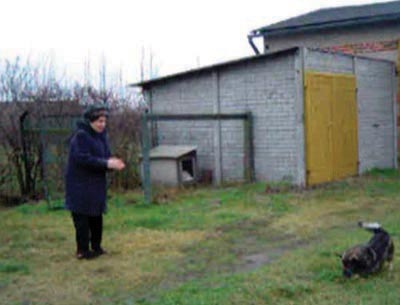
Photo 11: Still from the video: "Intentionality, playing, country, exchange of gestures, game—ball" (The dog catches the ball
and fetches it to the owner, she is clapping her hands and saying: "Bravo, bravoo, bravoo!" and says: "More, more!")
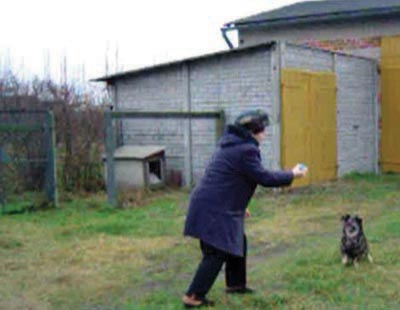
Photo 12: Still from the video: "Intentionality, playing, country, exchange of gestures, game—ball" ("And now Missy will throw
the ball up. Careful, jump!")
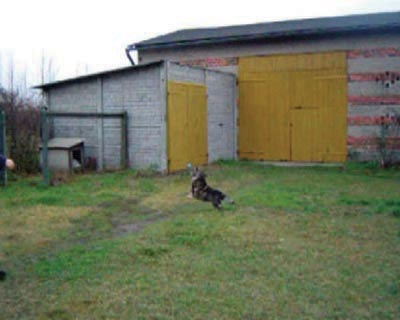
Photo 13: Still from the video: "Intentionality, playing, country, exchange of gestures, game—ball" (continuation of the previous
sequence of gestures)
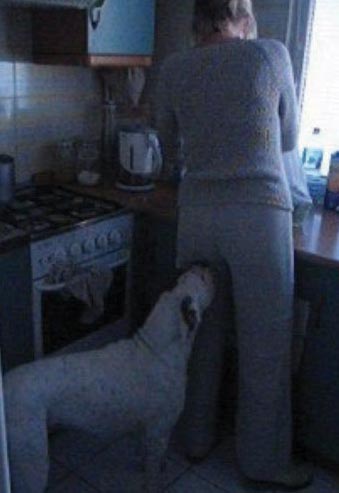
Photo 14: Still from the video: "Ignoring" [52]
Playing is the social association in which mutual exchange of gestures is a basic, somehow formal, condition of its occurrence. It was clearly visible also in another video showing interaction with the ferret (animal other than dog), in which an attempt to catch the animal is connected with the escape and the return, a gentle reaching out of hand with the animal catching it with its teeth and licking a pointing finger. [53]
In playing with the ferret we also observed the similarity to playing with children when e.g. we tuck them up in the blanket, then uncover, then cover, and uncover, etc., the owner of the animal does exactly the same routine. The repetition of the action and the response establishes the playing. [54]
Description of the video "Ferret—putting to sleep and playing":
"M (male—animal caretaker) enters the room after the ferret, which passes by the bed. M bends down and tries to catch the animal, which jumps and flees. The ferret hides under the bed when M tries to catch her. When M is not bending anymore, the ferret runs towards him and hops next to his leg. M reaches out a hand towards her, grabs her under the body and puts her on the bed. M reaches out his right hand and the ferret jumps and catches the hand for a second. The ferret catches the edge of the blanket. M quickly covers the ferret with the blanket and then uncovers. The ferret jumps when M reaches out a pointed finger towards her. The ferret runs to the other side of the bed, moves a few steps on the edge of the bed, then quickly runs towards M, catches the wrist of the right hand while lying on the back. M holds her tail, gently scratches the fur and the animal touches his hand with her nose, licks it and sniffs his finger. M raises his hand, the ferret raises and jumps towards M, sniffs his hands, then jumps down from the bed, runs towards the cameraman, sniffs his foot, then bites it. The cameraman takes away the foot, the ferret jumps aside for a moment and then approaches cameraman's foot. The cameraman walks away for the distance of 1 metre, the ferret runs into the corner of the room". [55]
The social associations we are going to describe below are social forms based on everyday events, which require an exchange of gestures on interactional level (verbal and non-verbal), cooperation and adjustment to, of a minimum, two partners of interaction. Examples of association is the play were described earlier, and the spontaneous expression of emotions, feeding, giving medicine, greetings, farewells, etc. Such associations form everyday life in numerous contexts (household) and social groups, e.g. in family. These are the association that seem to form an interactional and emotional order and, as a result, social order. Putting social life in order is possible because when we add the association with a proper inner order they form our day in a broader temporal structure, which allows the repetition of actions (day by day) formed in a certain temporal-spatial order. The category of "social associations" will be described by means of enumeration of the properties and the theoretical description of these qualities, which, empirically speaking, take up the form of particular and situated activities based on a particular, adaptable exchange of gestures in particular sequences.10) [56]
7.1 Spontaneous expression of emotions
Everyday mutual and spontaneous expression of emotions occurs in situations when owners or animals initiate a certain way of touching, which aims at signalling positive emotions to the partner (usually they are positive emotions; unfortunately negative emotions were not observed, yet they can be imagined and learned about from mass-media relations). Staying within the same space of the household is the condition that enables such expressions of emotions. Family members often meet each other on the way to certain places, kitchen, or toilet. Animals have also their places/couches, usually in halls, or they stay with the members of the household in rooms or kitchen. It is easy to meet them there, therefore greetings/regards often turn into spontaneous expression of emotions. [57]
Everyday mutual and spontaneous expression of emotions is clearly visible in the video "Kissing and hugging" (see the still from the video below):
"A dog is lying on its couch in the hall (submissive pose?) and the owner kneels next to it. There are shoes scattered on the floor. The owner holds dog's head and kisses his head on the side saying: 'Dear Sir'. Then she leans upwards, the dog looks at her. She says pulling dogs ears: 'We'll send you to Marmurowa (the street where animal shelter is situated), to Marmurowa (baby talk), cause stupid dogs are allowed in there'. She is still stroking the dog on the head and on the tummy with the other hand. Then she gets up" (transcription of the video "Kissing and hugging").
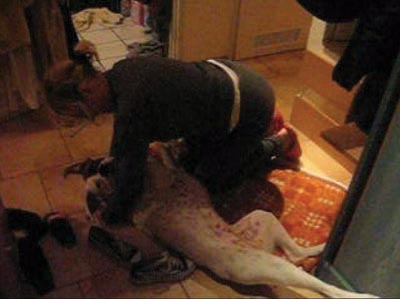
Photo 15: Still from the video: "Kissing and hugging" [58]
Situations similar to the above frequently happen in our houses, which we share with our animals. The direct contact between the owner and the dog, the contact based on touching there, influence a direct expression of emotions. The dog expresses full trust by looking directly into the owner's eyes and by showing full submission. The woman expresses full acceptance of the animal by cuddling (stroking, hugging, kissing), they are indeed positive emotions. Cuddling also indicate a certain symmetry in expressing emotions. The intention is the mutual emotional acceptance, which in consequence forms and keeps the bond. [59]
Greetings with domestic animals have a similar function in communication as in interactions between humans. Establishing contact after a longer (more or less) time of separation requires introduction and gradual adaptation to each other's presence. Bodies approaching each other need time to get used to each other, and then, if they accept the presence of the participants of interaction, there may occur other social associations, e.g. playing, or having meals, etc. The following is the example from the video "Greeting and exchange of gestures":
"A middle-aged woman enters the flat. The dog (it heard the door being opened, runs towards her) and starts jumping. It jumps twice to the height of her hips. The woman reaches out her right hand and strokes the jumping dog on the face while it is in the air. The dog walks away from the woman into the hall. The woman takes off her jacket and hangs it smiling at the dog. In the meantime the dog notices the cameraman and looks at him for a few seconds. Then suddenly it remembers the initial object of interest and starts jumping again. The woman goes right to the kitchen but suddenly decides to go straight into the living-room, few times pats the accompanying dog on the face. The animal is jumping all the way, constantly trying to attract her attention. The woman bends down over the dog, catches its face and strokes it. In a moment she bends even lower, holds the dog's face both hands and starts kissing it (the sounds of kissing are clearly audible) putting it against her face (it lasts for approximately 9 seconds). The dog sits down for a short moment, but soon gets up and starts jumping, wagging its tail. The woman stops paying attention to the dog, gets up and goes to the kitchen in order to unpack the bags" (transcription of a video "Greeting and exchange of gestures").
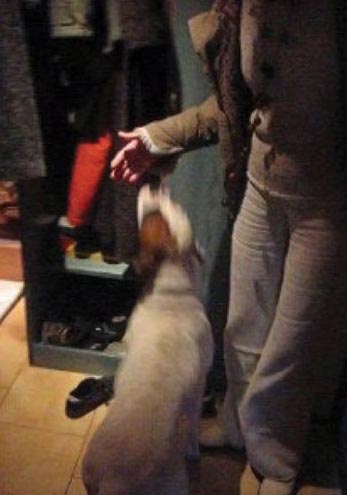
Photo 16: Still from the video: "Greeting and exchange of gestures" (greeting while taking off the jacket)
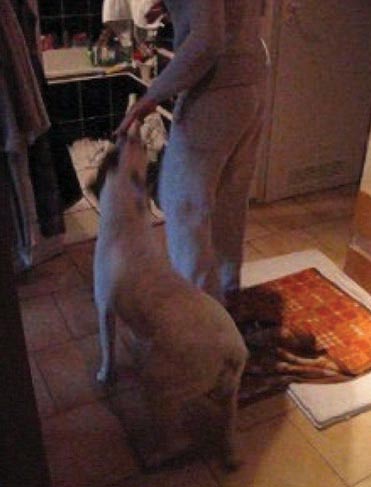
Photo 17: Still from the video: "Greeting and exchange of gestures" (continuation of greeting after taking off the jacket
and on the way to the kitchen)
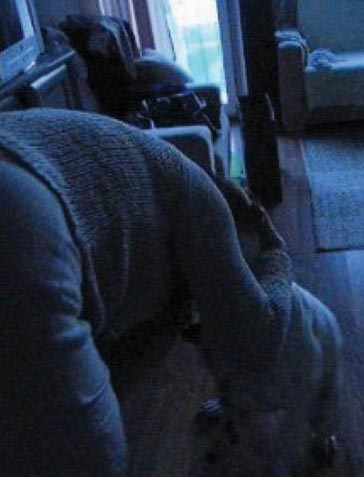
Photo 18: Still from the video: "Greeting and exchange of gestures" (continuation of greeting—cuddling and kissing) [60]
In the video described above we can observe mutual intentional "greeting", the dog jumps onto the woman, she is trying to return the interest and while taking off her coat she is stroking the dog. After removing her coat the greeting continues by means of non-verbal communication (the dog jumps, looks at the owner, who pats him gently, touching, kissing). The situation shown in the video demonstrates if the greeting on the part of the animal is not returned "in total" (simultaneous actions) there is a structural pressure of greeting, in which, as in "adjacency pair" (good morning—good morning), the first round/gesture needs to be completed by another particular turn/gesture for the given context. Greeting needs to be complete, because it consists of at least two gestures. Both sides make moves definitely intentional (with an intention to achieve particular aim), in this case the dog initiates the exchange. Both sides intend to get accustomed to each other and receive acceptance of the presence in the same space, as well as expressed emotions. Greeting is then a social form, which intentionally contributes to a constant establishing and maintaining of contact, and in consequence the building of a relation. The emotional engagement of both sides is clearly expressed and confirmed by means of touching. [61]
Greeting usually after a longer time of absence is very intensive and demonstrative (it was observed in the videos showing greetings). In greeting as the form social association the important aspect is also the "exchange of gestures". The exchange is connected with various gestures, on the human side they are: pulling ears, stroking, talking to animal; on the dog side they are: jumping, jumping onto the person, and licking. If a greeting lasts long (too long for a human) the person starts to reprimand the dog and tries to force it to behave by means of gestures, or pushes it away in order to close the greeting, which slowly transforms into playing. If there is no reaction from the animal then the human gets irritated and there occurs a definite rejection of possible transformation of greeting into playing (see the video described above). We observe certain negotiation and work upon keeping the particular form of association. [62]
Are all the gestures the elements of greeting or playing? Both types of association are difficult to distinguish. Although greeting lasts much shorter and playing usually lasts longer, the latter is characterised by a longer exchange of gestures completed with signs of happiness and contentment from the participants. During playing and greeting it is important to exchange friendly, cheerful, often "amusing" gestures. Therefore it is easy to transform the greeting into playing from a formal point of view, though in order to achieve that there has to occur an identical intention on both sides of interaction. If one of the partners of interaction ignores the other then the occurrence of exchange of gestures and beginning of playing is impossible. [63]
In the case of companion animals feeding is a daily routine in the owner's household. It is an activity which though important is so obvious that it does not evoke any consideration. Because of its commonness it becomes an unnoticeable activity, but because of its repeatability and customary character feeding is an activity emotionally binding for an owner and an animal. As it was stated, feeding occurs daily, furthermore, it is usually preceded by a "conversation" with an animal and it often includes words of love:
" 'Juluś! Here you are, you little dodger, you. Come on, starveling, I'll serve you'. The cat is standing on the kitchen floor, and is looking at the woman and the saucer with food and it is wagging its tail—'Come on!'. The woman leaves the kitchen and goes to another room (where Julian's plates are), and the cat is following her and trying to overtake her miaowing loudly. They enter the room, the woman holds the saucer low and the cat stands on its back legs, sniffing for food. The woman puts the saucer on the floor and the cat starts eating immediately" (transcription from the video "Julian 2). [64]
During feeding there occur anthropomorphisations and ascriptions of feelings and sensations to an animal, e.g. "desire", "admiration", "satisfaction", "happiness" (the video "Feeding", see description below and Photo 19 from the video, especially drawing attention to the eyes of the animal). In the described video it is done by the person feeding the animal (student-researcher's assistant), who also later in the course of transcription of the interview uses the anthropomorphising definitions and procedures of "ascription of intentions" in order to understand behaviour of the animal in the context of feeding, and broader in the domestic context and to achieve "agreement", that is, adjustment of actions and intentions:
"A dog jumps, stands on its back legs hoping that I have something delicious in my hand, something I could give her. She can't stop jumping and eventually her efforts are rewarded. The dog is licking her lips and is wagging her tail. There is a conversation going on in the background, I can hear words: 'Tomek, there is plenty of chicken skin for her'. The members of the household kept the leftovers especially for the dog. Fiola, when she notices a huge, delicious piece in my hand, she stands on her back legs, leans her back against kitchen cabinet and is looking greedily at the food. I say: 'Gosh! Fiolson!' The woman says anxiously: 'Tomek, there might be a bone in it', the other person replies: 'No, there isn't any'. The dog gets a piece of chicken, licks her lips and waits for more. I say: 'That's the happiest dog in the world!' Impatient Fiola still jumps around, and I say to her: 'Beg, beg!' I want to discipline her. The dog freezes in the begging position for a split second and then continues jumping on her back legs and receives another bit. Delighted Fiola is wagging her tail, licks her lips and sits down satisfied. She sniffs the closest surrounding in search for further catches" (transcription from the video "Feeding").
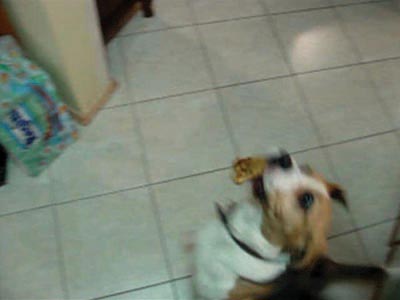
Photo 19: Still from the video: "Feeding" [65]
Giving medicines is yet another form of association, in which the exchange of gestures is clearly visible. There also occur the expression of concern by "sweet talk" and expressing of love by kissing. We may observe a sequence (process) of giving medicine, first there is encouraging of the cat to come to the owner, then the medicine is given, and cooling out the animal while giving it the medicine and afterwards too. It is shown in the video "Giving medicines", in which we may observe interactions between a human and a cat (the transcription of the video was done by the owner of the cat).
" 'Come, sweetie, time for a pill, come'. We can hear the pill being taken out of the package. Pantera sits, licks her lips and looks upwards. 'Come, little one'. We can hear the sound of pill being broken in half. Pantera is still looking upwards at me to see what I am doing. I say: 'Come' and I get up, Pantera mioaws. I take her into my arms. I say: 'Don't be afraid'. We sit down together on the couch. I kiss her on the cheek. Pantera miaows. 'Don't cry, my darling, don't be afraid' " (transcription from the video "Giving medicines"). [66]
The phrase: "Don't be afraid" is repeated numerous times in order to pacify the animal before giving her the pill. [67]
A possible consequence of giving the medicine could be "taking offence" by the animal. It is the form of ascription intention to the animal, which results in an attempt to explain to the animal that it is done for its own good. Here is the reaction of the human after giving medicine:
"I repeat: 'You're angry with me, aren't you? But its for your own good, Precious'. Pantera sits behind a bunch of flowers and is looking at me" (transcription from the video "After the pill"). [68]
In the last fragment of the video we can observe "sentimental work", which is carried by the owner of the cat after giving medicine (see still from the video "After the pill", Photo 20). The aim of the work is cooling out the animal, which is apparently disturbed (visible reactions) by the procedure of giving medicine.
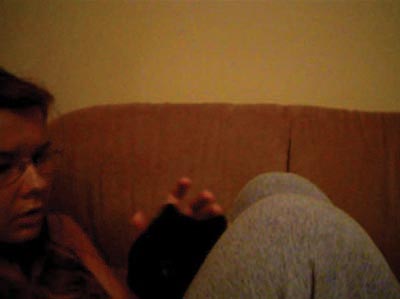
Photo 20: Still from the video: "After the pill" (cooling out the animal) [69]
The other form of association are walks. Owners, mainly living in cities, walk their dogs in parks, streets and forests, etc. (see LAURIER, MAZE & LUNDIN, 2006). Walks resemble walking of parents with their children. The concern as to what the animals are doing when they walk away is present. It seems that a "common identity" is mainly formed during walks, when the owner is perceived and categorised as merely the element of a pair, which he forms with an animal and contrary, the animal is seen as inseparable in the relation with the owner. In situation when during the walk the owner meets parents with small children, there occurs expectation towards the owner of the dog (category describing identity) to secure the animal (category characterising identity—the owner's animal) against a potential attack on children.11) [70]
One of the main functions of walks is letting the animal relieve its physiological needs. In the video "Walk, relieving needs, Old lady walk" (hidden camera) we may observe three people with dogs on the path between lawns in front of blocks of flats:
"Dogs walk onto the lawns to relieve themselves. Old lady leads the dog on an extending leash, the animal walks onto the lawn and relieves itself (with an arched back). The owner is not looking at the animal, stops still not looking, pretending ignorance as to what the dog is doing (see still 21). The leash stretches to the limit (still 22) because the owner keeps walking and the dog is standing in one place, it is not until then that the woman looks at her pet. After the dog relieved itself the lady looks at him, somehow checking his behaviour (in order to make sure whether the activity has been finished (Photo 23) and after 1 second the lady looks back at the path (as if she was checking if anyone has noticed the relieving of needs, see Photo 24).12) After that the dog runs towards the owner and they continue the walk. The dog sniffs the lawn near the path and stays behind, stretching the leash again; the owner turns around, the dog runs towards her again and goes forward stretching the leash." (Transcription of the video "Walk, relieving needs, Old lady walk")
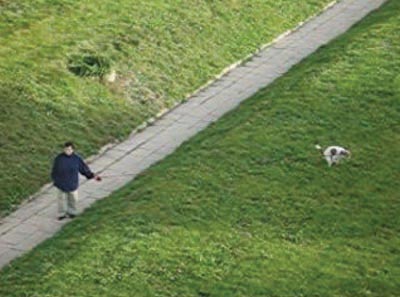
Photo 21: Still from the video: "Walk, relieving needs, Old lady walk" (relieving nature)
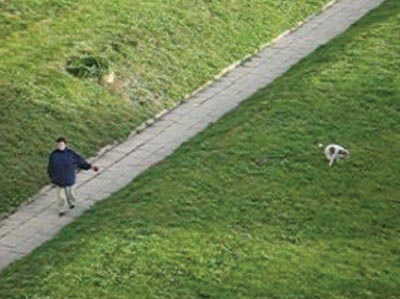
Photo 22: Still from the video: "Walk, relieving needs, Old lady walk" (stretching the leash)
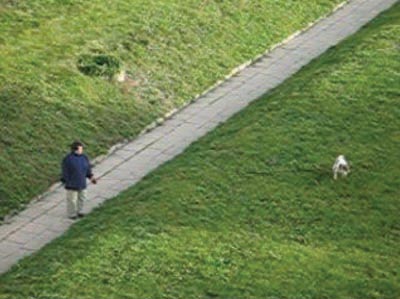
Photo 23: Still from the video: "Walk, relieving needs, Old lady walk" (looking at the dog)
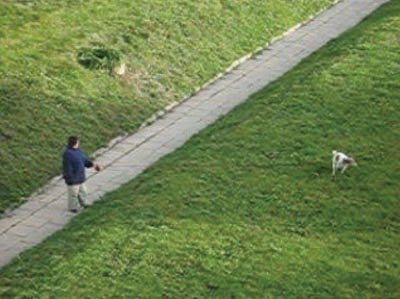
Photo 24: Still from the video: "Walk, relieving needs, Old lady walk" (looking back at the path) [71]
As we see, walks connected with relieving needs require the coordination and application of gestures from both parties to the interaction. We observe an exchange of gestures: walking onto the lawn—ignoring by the owner; stopping by the owner—relieving by the dog, stretching the leash—turning around and looking at the dog (controlling), looking backwards onto the path—the dog running towards its owner. All those exchanges of gestures form an entity of association harmonious inside, lasting in time and with particular purpose. [72]
During walks there also occur "playing" and "training" carried out by owners. Associations not only are added to each other in time, but they also intersect and overlap. Sometimes it is difficult to tell apart playing and training (or greeting), because training might occur in the conventional form of playing, even though the purpose of the "trainer"/owner is teaching the animal the particular sequences of actions, as in e.g. fetching the stick to hand (see Photos 25, 26, 27 below, video done with hidden camera). The only evidence that the situation is actually "training' (obviously amateur training) is strengthening of desired reactions by giving the animal food or attempting it. The end of training is marked by putting the leash back on dog's collar.
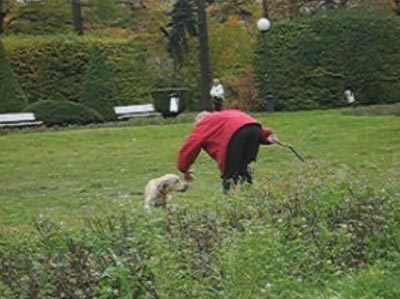
Photo 25: Still from the video: "Walk, playing, training, touching"
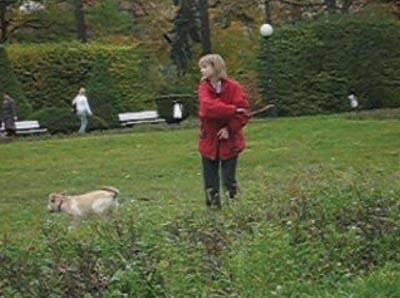
Photo 26: Still from the video: "Walk, playing, training, touching"
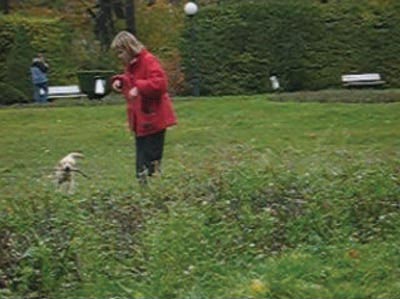
Photo 27: Still from the video: "Walk, playing, training, touching" [73]
There also happen "fights during walks" (see Photo 28 from the video: "Walks, identity of being together"), when animals, unfamiliar or even familiar to themselves, attack each other. Owners take actions by means of gestures in the similar manner to the situation of parents when children fight with each other, by shouting, pulling aside, catching and interpreting these gestures (verbally and/or non-verbally, apologising, arguing, ignoring each other, turning around and walking away). [74]
Fights build social bond and "mutual identity" at the same time on the emotional level, when e.g. someone is protecting an animal against other attacking animal in the presence of the owner/caretaker.
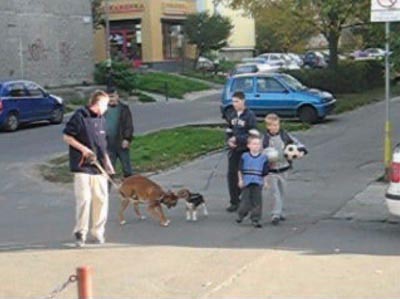
Photo 28: Still from the video: "Walks, identity of being together" [75]
Punishment of animals is also a form of association, which is an element of everyday life in families with animals. Punishment of children is an element of discipline. The situation with animals is similar, and punishment of children is a particular pattern applied to animals. The punishment sometimes has a humorous, indulgent character and often expresses positive feelings. [76]
"What's up, my sweet bad boy, huh?, You bad cat, you, come down, quickly, come! (video "Punishment 2"):
"Evening, a cat jumped onto the table and started biting and scratching it. My mum enters the room. The sound of TV in the background.
The cat is lying on its side, on the table, it is holding crumpled tablecloth in its paws. A woman enters the room and starts talking to the cat, leaning over him: 'Why did you crumple my tablecloth? What have you done? Your lady worked hard and you've spoilt it? Clear off the table, quick!' The cat is looking at the woman all the time and is wagging its tail, but it's not moving. 'Hey, the cat's angry? Clear off!' She pats Julian on the head and he turn on his back, puts paws up and starts miaowing. The woman is still talking to him: 'Scram! Come down!'—the cat snorts and the woman pats him on the head with finger saying: 'Huh, you're taking claws out at me!' The cat, now lying on the belly. is looking at the woman. She says: 'Bad cat, you, come down, quick!' she puts the tablecloth back straight, but the cat turns around again to the side and puts the paw on the tablecloth, he's wagging his tail very quickly and miaowing loudly. The woman attempts to stroke it on the head but he is miaowing again and moves head aside. There is also a dog in the room, it is wagging its tail and looking at the woman, who addresses the cat again: 'What do you want?' The woman leaves the room and calls the cat: 'Come here, I'll give you a sachet, come! Come quickly!' The cat is still lying on the table, he's looking towards the door. (The woman asks me from the kitchen whether there is a sachet, I answer positively; person transcribing.) We can hear the sound of opening the fridge, the cat suddenly gets up and sits looking at the door. For a few seconds he sits still, then suddenly jumps down and runs to the kitchen, the woman calls: 'Juluś, oh, here you are, clever boy, you. Come, little starveling, I'll serve you'. The cat is standing on the kitchen floor and staring at the woman and the saucer with food wagging his tail at the same time. 'Come!' says the woman. She leaves the kitchen goes to the room (there are Julian's plates), the cat follows, tries to run first and he's miaowing loudly. They enter the room, the woman is holding the saucer high and the cat is standing on its back legs, sniffing the food. The woman puts the food on the floor and the cat starts eating immediately" (description from the video "Julian 2"). [77]
In the above situation "indulgent reproach" occurred in a particular sequence. The cat lying on the table crumpled the tablecloth and the caretaker was trying to make him come down to the floor. She fails to do it by means of inducement (her vocalisation) she decided to persuade him with food. The situation and social association of punishment transformed into the association of feeding. [78]
The application of baby talk indicates the expression of positive emotions towards the animal, thus reproach with the use of baby talk is indulgent, and addressing animals in a "sweet" manner (amae) is an indication of emotional bond existing between the owner and the animal ("Why did you crumple my tablecloth? What have you done? Your lady worked hard and you've spoilt it? Clear of the table, quick!"). [79]
Also in the video "Greeting, punishment, cuddling, country, baby-talk" (see Photo 29 below) we observe "indulgent reproach".
"The owner greets her dog (Alsatian) after arriving at home, she kisses him while still at the gate. Then she enters the premises and continues greetings, asking him to give a paw. The dog is very excited and is running around the yard near the owner, jumping. The dog lets the second dog out (a small mongrel) from the house, which also wants to greet her 'Come to me!' the owner invites the dog. The first dog attacks the second and the owner shouts: 'Rambo, don't jump! Rambo!' She addresses the other dog in a sweet voice: 'Come, baby'. The mongrel runs to her and jumps onto her. The woman hugs him. After a while the Alsatian impetuously jumps between them. 'Come to your lady!' she says to the mongrel. 'Come, baby, come sweetheart'. The Alsatian gnaws the mongrel. The caretaker shouts at the Alsatian in a bit hoarse voice—'Rambo! (she tries to pat him gently on the back, but quickly withdraws her hand: see Photo 29 below) Rambo!' Then she calls the mongrel again 'Come Mijalu (?), come precious, come to your lady, come' " (transcription of the video "Greeting, punishment, cuddling, country, baby-talk").
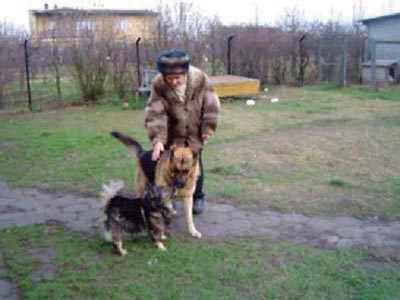
Photo 29: Video: "Greeting, punishment, cuddling, country, baby-talk" (an attempt to pat the dog) [80]
Punishment here is rather delicate and resembles the reproaching of children by a parent, when they act as if jealous towards other children. [81]
7.7 Establishing a form of interaction
"Establishing form of interaction—negotiations" is the situation, when animals try to "negotiate" with people in order to achieve goals. For instance, when they want to get food while the members of the household are having meal, that is, they want to eat food together with people. By means of sniffing, looking, staring at a desired object or its closest surrounding they attempt to persuade the members of the household to give them the food. The household members on the other hand try to distract animal from the table using toys and other possible tricks, e.g. encouraging to play, or just by ignoring them13) (video "At the dinner—negotiations").
"Fiola, unnoticed, is standing next to the chair and timidly sniffing the territory. Nobody pays attention. The dog knows that she will not get any food at the table, but still is hoping that someone might change the rule. She is looking at the table full of food. I tell my sister to drive Fiola away. The dog when she hears her name firstly gets excited but Weronika quickly extinguishes her enthusiasm. She harshly orders Fiola to go away. The sad dog unwillingly sits behind the chair. She is miserable and sniffs the floor around. Mateusz enters the room, the hope in the dog is revived, but it quickly dies out. After a while Weronika gets up from her chair, which makes Fiola disoriented. The hope rises again for eating something which is not dry dog food. But the dog is ignored and eventually excluded from family dinner" (transcription of the video "At the dinner—negotiations").
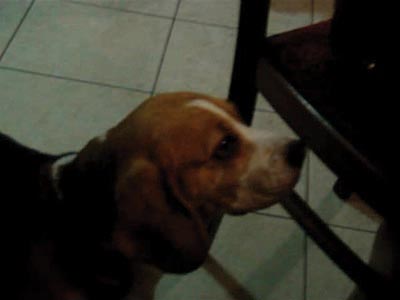
Photo 30: "At the dinner—negotiation" video 3 (Looking towards the table)
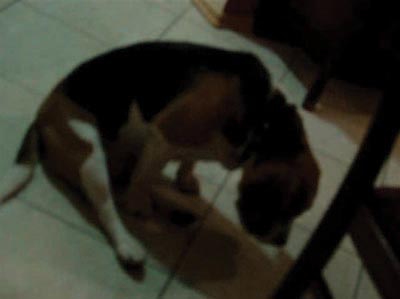
Photo 31: "At the dinner—negotiation" video 3 (She harshly orders Fiola to go away. The sad dog unwillingly sits behind the
chair. She is miserable and sniffs the floor around). [82]
Another form of social association is "putting to sleep". It usually refers to putting children to sleep, who, when tired, are cuddled by their parents and also stroked, gently itched and while soothed by "baby-talk" they are carried to bed. Caressing before sleep is approved form of saying goodbye to children before bedtime. The same sequence of actions is applied to domestic animals (see Photos 32 and 33). [83]
The sequence of gestures connected with putting to sleep is clearly visible in the video "Putting to sleep and playing—the ferret".
"M (male—ferret's caretaker) cuddles the ferret holding her on his left palm, he strokes her on the back and talks to her (we cannot hear it). The ferret is not sleeping, her eyes are open but she is not moving. M grabs her by the neck, puts the head properly and puts her on the other hand (all the actions are taken at a slow, tranquilising pace). The man puts his finger near the ferret's face for a moment. The animal licks its lips. The man gently grabs the tail and strokes it, he opens the drawer, puts the ferret on the other palm and places her in the drawer. The ferret turns her back and goes deeper into the drawer tucking her tail. After a while M slides the drawer in" (transcription of the video "Putting to sleep and playing—the ferret"). [84]
The video showing the ferret also indicates a similar set of actions connected with a form of association we called "putting to sleep". A tired animal is stroked slowly, touched, gently scratched (caressing), and eventually put into a drawer, which is the place where she rests. Every action is performed slowly in a "tranquillising" manner.14) [85]
"The other side of the medal" is "waking the animal up", when it is gently scratched, stroked, untucked from the blankets, and it is talked to in order to stimulate it and eventually wake up and take it out from "bed" where it is hiding. It is also an important domestic ritual, which resembles in form (gestures) waking up of small children (see the video clip "My ferret Piko Waking up and my rabbit Sam 2" from http://www.youtube.com/watch?v=hCpPLjcHqOA). [86]
All the forms of association include and show the rule of gesture exchange. It is a universal rule, which links subjects of interaction willing to enter any kind of social association. Each gesture breeds another gesture, then another gesture occurs, which form particular pairs of gestures, and in consequence, a complete sequence of gestures is constructed, which are often longer than just a pair of gestures, or a few pairs. Sequences of gestures together form some form of social association. The rule of exchange of gestures being the condition of building any social association, in consequence enables the formation of emotional bond and some forms of collective actions (family—household) and then, eventually a kind of "family identity". [87]
The exchanges of gestures in the form of "adjacency pairs" discussed in the article allow for keeping certain interaction, emotional and organisational order in the household. An emotional bond is formed and kept by means of gestures of: greeting, everyday spontaneous expression of emotions in contacts with animals. In order to maintain the balance between extensive closeness and extensive distance in the household (see SCHEFF, 1990, p.4, who uses the term differentiation) there is applied "ignoring in intention of terminating interaction" which usually ends with "acceptance of intention of terminating interaction". Intentionality in actions may be found in returning of gestures (as in adjacency pair), which together link intentionality of two partners of interaction and form certain contextually subjective combination of mutually comprehensive gestures, which eventually build a form of social contact, e.g. "greeting" or "ignoring in intention of terminating interaction". [88]
At the end of this article, on the basis of analysis of our data we form a first thesis: greetings, playing, feeding, giving medicines, putting to sleep, everyday spontaneous expressing of emotions, indulgent reproach are all forms of associations with inner order and through such order are building non-verbal structure of human statements, repetition in time and mutual adjustment, and consequently emotional bond of the members of household (family, see Diagram 1 in Appendix 1). [89]
These associations are based on non-verbal communication and touching. This communication is repeated daily. In this type of communication we usually observe an "exchange of gestures", which consists of various reactions, which are responses to previously occurring gestures. Touching is intermingled in the exchange. Touching, in turn, allows for common acceptance of the life of humans and animals in the same space. It is a form of accepting communication and the formation and keeping of emotional community, e.g. by means of greetings, feeding or playing. It happens in such a way because the exchanges are accompanied by emotions, which might be observed also through non-verbal and paraverbal signals and statements of humans and vocalisations of humans and animals. It is a "touching" construction of "family frame" for relations referring to the meeting of two species of animals, people and particular species of domestic animals, in which animals are often perceived as family members and children (see KONECKI, 2005a, pp.153-159; FOOTE, 1956; CAIN, 1983, 1985; CARMACK, 1985; BELK, 1996; RAUPP, 1999, p.145; FLYNN, 2000, pp.105, 121, 122). Such a "family frame" has to be maintained on a daily basis by the intentional formation by the means of exchange and adjustment of gestures, particular associations, which become a unity and broader community of action, that is, joint action (BLUMER, 1969). In our case the broader joint action is "household—family". [90]
The second thesis, being the conclusion of the research, is as follows: in the interactive and adaptable exchange of gestures the family identity of domestic animals and people being the part of the household is formed. [91]
By walks, fights during walks, visitors at homes, where animals are kept, the caretakers of animals are perceived together as at one with the animal, which is close to them, and also in reverse. Such an ego is reflected in the element of formation of a certain type of individual identity, that is, the identity of an animal owner, but also the animal itself, to which the identity of "being together" with a particular owner is ascribed (mutual identity). The exchange of gestures (touching, kissing, hugging, cuddling, scratching, purring) seen by others and testified to verbally or non-verbally, for the participants of interaction, is a confirmation of relation, attitudes and their identity together. Relations become more firmly realised and confirmed by everyday observable behaviour (see stills from the videos). Exchange of gestures causes the formation of particular socially typified social associations, which, in turn, indicate the existence of an emotional bond between the participants of these associations (through use of baby-talk, "sweet indulgence", kissing, cuddling, etc). This emotional bond is characteristic for certain forms of social coexistence such as family or friendship. If such is the definition of perceived markers of association and the emotional bond of animal owners linked to them, and after that the definition of forms of coexistence (e.g. family), then there appears a particular feeling of identification of both (or more) partners of interaction and the formation of a common identity of the partners in repetitive interactions over a period of time. [92]
Observation of the above phenomena at the interactional level (adaptable exchange of gestures) would be impossible without the use of video recordings and the detailed analysis of the material. Observation and distinguishing of these slight gestures (touching) their sequence and their significance in everyday life show how important the role of visual sociology might be for field and qualitative research. In connection to the strategy of detailed analysis done with the employment of methodology of grounded theory, the strategy of visual sociology forms a particular "methodological pair", which allows the analysis of rudiments of social order and of what is the most important from the perspective of sociologist, how the social bond is formed. [93]
Appendix 1: Formation of Emotional Bond and Identity by Means of Exchange of Gestures

Diagram 1: Formation of emotional bond and identity by means of exchange of gestures
Video Data from the Research Project
"After the pill"
"An animal carried in arms like a child"
"At the dinner—negotiation"
"Cuddling on the chain"
"Dogs playing, intentionality—exchange of gestures"
"Feeding"
"Ferret—putting to sleep and playing"
"Giving medicines"
"Greeting and exchange of gestures"
"Greeting, punishment, cuddling, country, baby-talk"
"Ignoring"
"Intentionality, playing, country, exchange of gestures, game—ball"
"Julian 2"
"Julian 4"
"Kissing and hugging"
"My ferret Piko Waking up and my rabbit Sam 2"
"Panther on the floor"
"Punishment 2"
"Touching two dogs—a need of symmetry"
"Walks, identity of being together"
"Walk, playing, training, touching"
"Walk, relieving needs, Old lady walk"
1) I would like to thank Dr. Piotr CHOMCZYNSKI and students of Lodz University that have been the participants of my classes of Qualitative Methods for the films and descriptions of interactional contexts. I thank also Anna KUBCZAK for the links to the Internet videos on ferrets. I am very grateful to Eric LAURIER for his careful reading and language corrections of the last version of the paper. <back>
2) Data can be classified, using typology of KNOBLAUCH (2004, pp.126-127), as "scientifically registered social situations" and as "a data registered by participants of natural social situations". The cooperators of the researcher (students) often registered their own interactions with companion animals. <back>
3) GOODE (2007, p.15) did not use transcription of video images (or he does not write about it) he directly analysed the material through repeated viewing of the recordings and the thorough presentation of details of the phenomenon and on the basis of the sequencing of stills showing the order of events. I believe, that textual transcription of video images is a tool which serves as a pre-phase of the analysis, because "rewriting"/description forces a researcher to consideration of what he or she actually saw on the film. "Rewriting" also enforces a detailed way of thinking about the reality presented in the images. <back>
4) The phenomenon of "baby talk" was observed also by GOODE (2007). <back>
5) "Baby talk" can be also used in the ironic form towards adults or while talking about adults. <back>
6) In our research on the relations between domestic animals and people in the region of Lódź (2002-2003), 73% of respondents claimed that the "animal is playing with us". It is the most common category of behaviour of animals appearing in the examined households (KONECKI, 2005a, p.211). The similar situation of a considerable intensity of playing in the interactions with domestic animals (dogs) occurs in other countries, around 95% of dog owners in the USA claim that they often play with their dogs (see GOODE, 2007, p.19). <back>
7) Exchange of gestures resembles what the analysts of conversation call "turn taking" (RANCEW-SIKORA, 2007, pp.43-46; SILVERMAN, 2007, 2001; LAURIER, MAZE & LUNDIN 2006, p.11). <back>
8) "Adjacency pair" is a concept developed by analysts of conversation, e.g. question—answer, greeting - greeting, summons—answer, compliment—denial, accusation—defying of accusation, request—fulfilment or refusal, farewell—farewell, invitation—acceptance or refusal of invitation, command—carrying out a command or refusal (SILVERMAN, 2007, pp.66-68; RANCEW-SIKORA, 2007, p..43, 47-48). <back>
9) See also the clips from the Internet, showing similar phenomena: http://video.aol.com/video-detail/a-dog-that-can-play-football/2454173113, http://www.youtube.com/watch?v=CMjUT1qHb8Y, http://www.youtube.com/watch?v=eMv9LJxI74Q&feature=related. <back>
10) The phenomenon described with the term "social associations" resembles "lived orders", a concept given by ethnomethodologist David GOODE (2007) after Harold GARFINKEL. "Lived orders" are the names of particular, actual and observed events. The adjective "lived" means for ethnomethodology, that there occur in particular place and time with particular participants of interaction. The general ways of dealing with such situations as conversation, queue in a shop, playing might be well-known for the participants, yet the way these "orders" are achieved is decided in particular situations. Therefore the details of the situations are also important. Common events are produced only by details that is why they have to be presented and carefully analysed (GOODE, 2007, p.10). The similarity of the term "social associations" used in our study to that of "lived orders" is yet ostensible. In the definition "social associations" we emphasise the mutual adjustment of the participants of interaction, who eventually informed and intentional sequence of gestures, and emotional adjustment perform joint action. Furthermore these actions, by summing up and crossing each other in the spatial and life context of the household, they form wider social being, which is also "joint action" but on other level that of family. <back>
11) Such "mutual identity" is particularly visible in relations between a guide dog and a blind person. After the training with the animal a blind person changes the identity from "I" to "We". The dog helps in every situation, the blind person is perceived together with the animal, the blind person perceives the physical world thanks to the animal by feeling the movements of the dog on the leash. The relation "guide dog—blind person" is based on loyalty and trust and unconditional acceptance of "blindness" by the dog. Security of blind person depends on the movements of the dog. What is more, the dog suffers numerous inconveniences while leading the owner. Paradoxically, by dependence on the dog, a blind person gains independence in the outside world. These relations between the caretakers and animals is called by GOODE "a lived orderliness", which defines who is who in the particular relation (GOODE, 2007, pp.110-114). In the relation described above two identities are linked within one "mutual identity". <back>
12) In Lodz (Poland), where the film was shot in 2007, there exists a legal requirement ordering pet owners to clean animal waste in public places, however the rule is generally not obeyed. <back>
13) For more information about "ignoring" see also Section 6. <back>
14) See also video clip "Ferret falling asleep" that was downloaded from http://www.youtube.com/watch?v=dMB-Fj61o6U&mode=related&search. There are numerous websites, films and photos in the Internet illustrating behaviour of domestic animals in various situations. Visualisations of relations between humans and animals are quite common way of presenting one’s interest, feelings, hobbies, generally: one’s identity also on the Internet (see a website devoted to ferrets: http://galeria.fretki.info/). <back>
Bateson, Gregory (1972/2000). Steps to an ecology of mind. Chicago: The University of Chicago Press.
Belk, Russell (1996). Metaphoric relationship with pets. Society and Animals, 4(2), 121-145.
Blumer, Herbert (1969). Symbolic interactionism. Perspective and method. Berkeley: University of California Press.
Cain, Ann (1983). A study of pets in the family system. In Aaron Honori Katcher & Alan M. Beck (Eds.), New perspectives on our lives with companion animals (pp.72-81). Philadelphia: University of Pennsylvania.
Cain, Ann (1985). Pets as family members. Marriage and Family Review, 8(3/4), 5-10.
Carmack, Betty J. (1985). The effects of family members and functioning after the death of a pet. In Martin B. Sussman (Ed.), Pets and family (pp.149-162). New York: Haworth.
Charmaz, Kathy (2006). Constructing grounded theory: A practical guide through qualitative analysis. London: Sage.
Doi, Takeo (1982). The anatomy of dependence. Tokyo: Kodansha.
Flynn, Clifton B. (2000). Battered women and their animal companions: Symbolic interaction between human and nonhuman animals. Society and Animals, 8(2), 99-127.
Foote, Nelson N. (1956). A neglected member of the family. Marriage and Family Living, 28, 213-218.
Glaser, Barney (1978). Theoretical sensitivity, San Francisco: The Sociology Press.
Glaser, Barney & Strauss, Anselm, L. (1967). Discovery of grounded theory: Strategies for qualitative research. Chicago: Aldine.
Goode, David (2007). Playing with my dog Katie. An ethnomethodological study of canine-human interaction. Purdue University Press.
Heath, Christian (1997). Using video: Analysing activities in face to face interaction. In David Silverman (Ed.), Qualitative research: Theory, method and practice (pp.183-200). London: Sage.
Knoblauch, Hubert (2004). Die Video-Interaktions-Analyse. Sozialer Sinn, 1, 123-138.
Knoblauch, Hubert; Schnettler, Bernt; Raab, Jürgen & Soeffner, Hans-Georg (Eds.) (2006). Video analysis: Methodology and methods. Qualitative audiovisual data analysis in sociology. Frankfurt am Main: Peter Lang.
Konecki, Krzysztof Tomasz (2000). Studia z metodologii badań jakościowych. Teoria ugruntowana. Warszawa: PWN.
Konecki, Krzysztof Tomasz (2005a). Ludzie i ich zwierzęta. Interakcjonistyczno-symboliczna analiza społecznego świata właścicieli zwierząt domowych. Warszawa: Scholar.
Konecki, Krzysztof Tomasz (2005b). Wizualne wyobrażenia. Główne strategie badawcze w socjologii wizualnej a metodologia teorii ugruntowanej. Przegląd Socjologii Jakościowej, I(1), Pobrany Miesiąc10, Rok 2007, http://www.qualitativesociologyreview.org/PL/Volume1/PSJ_1_1_Konecki.pdf [August 22, 2008].
Laurier, Eric; Maze, Ramia & Lundin, Johan (2006). Putting the dog in the park: Animal and human mind-in-action. Mind, Culture & Activity, 13, 2-24, http://www.era.lib.ed.ac.uk/handle/1842/2303 [August 7, 2008].
Leathers, Dale (2007). Komunikacja Niewerbalna. Warszawa: PWN.
Liberman, Kenneth (2004). Dialectical practice in Tibetan philosophical culture: An ethnomethodological inquiry into formal reasoning. Lanham, Md.: Rowman & Littlefield Publishers.
Mitchell, Robert W. & Thompson, Nicholas, S (1991). Projects, routines, and enticements in dog-human play. In Paul P.G. Bateson & Peter H. Klopfer (Eds.), Perspectives in human ethology (pp.189-216). New York: Plenum Press.
Rancew-Sikora, Dorota (2007). Analiza konwersacyjna jako metoda badania rozmów codziennych. Warszawa: Trio.
Raupp, Carol (1999). Treasuring, trashing or terrorizing: Adult outcomes of childhood socialization about companion animals. Society and Animals, 7(2), 141-159.
Sanders, Clinton (1999). Understanding dogs: Living and working with canine companions. Philadelphia: Temple University Press.
Scheff, Thomas (1990). Microsociology. Discourse, emotion and social structure. Chicago: The University Press.
Scott, Byron (1973). How the body feels. New York: Ballantine.
Silverman, David (2001). Interpreting qualitative data. Methods for analysing talk, text and interaction. London: Sage.
Silverman, David (2005). Doing qualitative research. A practical handbook. London: Sage.
Silverman, David (2007). A very short, fairly interesting and reasonably cheap book about qualitative research. Los Angeles: Sage.
Strauss, Anselm & Corbin, Juliet (1990). Basics of qualitative research. London: Sage.
Suchar, Charles (1997). Grounding visual research in shooting scripts. Qualitative Sociology, 20(1), 33-55.
Krzysztof T. KONECKI, current position: professor of sociology, chair of Organizational and Management Sociology Department, Lodz University, Poland (ul. Rewolucji 1905r. 41/43, 90-214 Lodz, Poland), vice-president of Qualitative Research Network of European Sociological Association, a member of the Board of Polish Sociological Association, a chief of a section of Qualitative Sociology and Symbolic Interactionism in Polish Sociological Association, Editor-in-chief of Qualitative Sociology Review.
Major research areas: qualitative sociology, grounded theory, symbolic interactionism, visual sociology, sociology of management and organization, sociology of work, organizational symbolism, Japanese culture and management, human-non-human-animals relationships.
Contact:
Prof. Dr. habil. Krzysztof T. Konecki
Lodz University
Faculty of Economics and Sociology
Institute of Sociology
The Sociology of Organisation & Management Department
ul. Rewolucji 1905 r. Nr 41/43
90-214 Lodz, Poland
E-mail: konecki@uni.lodz.pl
URL: http://www.krzysztofkonecki.prv.pl/
Konecki, Krzysztof Tomasz (2008). Touching and Gesture Exchange as an Element of Emotional Bond Construction. Application of Visual Sociology in the Research on Interaction between Humans and Animals [93 paragraphs]. Forum Qualitative Sozialforschung / Forum: Qualitative Social Research, 9(3), Art. 33, http://nbn-resolving.de/urn:nbn:de:0114-fqs0803337.